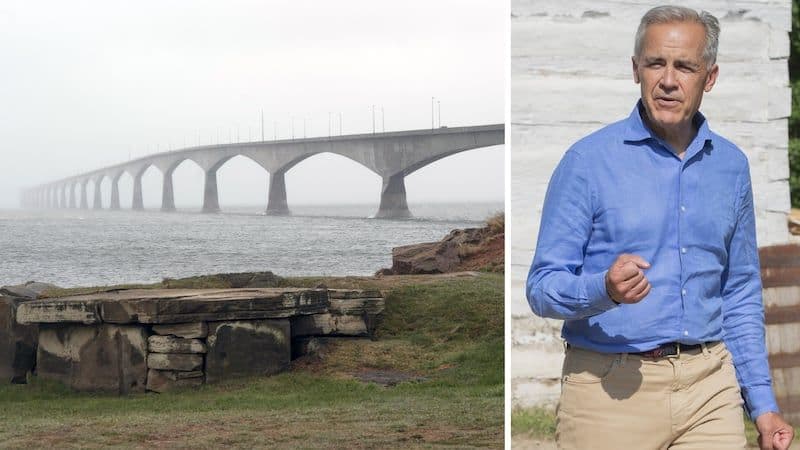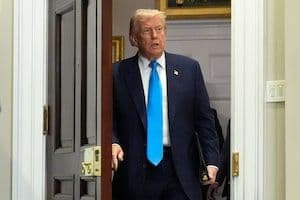The Carney Compass: Steering Canada Through North American Trade Tempests
Explore Mark Carney's strategic vision for Canada-US trade. Unpacking his unique influence, key negotiation fronts, and Canada's path to long-term resilience.

The Architect of Influence: Carney's Unique Role in Bilateral Strategy
isn't just another voice in the intricate dance of Canada-US trade relations; he's a strategic linchpin, bringing an unparalleled global perspective to the table. His distinguished career, spanning leadership roles at the , the , and as the , imbues his counsel with a depth few can match. This isn't about day-to-day politicking; it's about leveraging a sophisticated understanding of macroeconomics, financial markets, and geopolitical currents to shape Canada's long-term trade posture. When he speaks, whether about ongoing US negotiations or looming tariff deadlines, his words carry the weight of a central banker who has navigated multiple crises and understands the subtle levers of international influence. His advisory role transcends mere trade policy, instead framing it within broader themes of economic stability, resilience, and Canada's place in a shifting global order. It’s this unique blend of financial acumen and diplomatic experience that positions him as an indispensable architect of Canada’s bilateral strategy, offering insights that look far beyond the immediate headlines to the deeper structural forces at play.

Beyond the Immediate: Decoding Key Trade Fronts and Friction Points
To truly grasp the challenges facing Canada-US trade, one must look beyond the immediate skirmishes, a perspective champions. While headlines often focus on specific disputes, like the persistent softwood lumber tariffs that , among others, deems unwarranted and unfair, Carney’s influence encourages a deeper dive. He helps decode these friction points not as isolated incidents but as symptoms of broader global trends: the rise of protectionism, the imperative for supply chain security, and the increasing interplay between trade and climate policy. His central banking background equips Canada to anticipate how shifts in domestic economic policy, such as industrial support or 'Buy American' provisions, could impact Canadian sectors, even down to a $500 million loan request for . This analytical lens allows Canada to move beyond reactive measures, instead understanding the underlying economic nationalism and geopolitical anxieties that fuel these trade tensions. It's about identifying systemic risks and opportunities, rather than merely responding to each new tariff or regulatory hurdle as it emerges.

Canada's Strategic Maneuvers: Navigating Protectionism and Opportunity
In a world increasingly prone to protectionist impulses, , guided by insights from figures like , has been compelled to execute strategic maneuvers that bolster its economic resilience. This isn't about retreating from the vital relationship, but rather about strengthening Canada's hand within it, and crucially, diversifying beyond it. The strategy involves a multi-pronged approach: robust diplomatic engagement to articulate Canada's value proposition, a readiness to challenge unfair trade practices through established mechanisms, and a proactive focus on building domestic capacity in key sectors. Consider the emphasis on critical minerals, clean energy, and advanced manufacturing – areas where Canada seeks to become a preferred partner, not just a supplier. While the news might highlight local initiatives like slashing the toll to stimulate regional commerce, the larger picture involves a concerted effort to reduce over-reliance on any single market. This strategic pivot, informed by a global economic perspective, aims to create a Canada that is both deeply integrated with its closest neighbour and robustly connected to the wider international economy, capable of weathering future trade storms.

Future Horizons: Carney's Vision for Long-Term Economic Resilience
Looking ahead, 's influence on Canada's trade trajectory extends to shaping a long-term vision for economic resilience, moving beyond merely managing current disputes. His perspective, honed through global financial leadership and his significant work on climate finance, emphasizes a future where Canada’s prosperity is inextricably linked to sustainability and innovation. This vision entails transforming Canada into a leader in the green economy, leveraging its natural resources responsibly while investing heavily in clean technologies and a circular economy. It’s about building supply chains that are not only efficient but also secure and environmentally sound, reflecting a deep understanding of future global market demands and climate imperatives. Carney’s advocacy for aligning economic growth with climate action suggests a future where Canada-US trade is less about traditional goods and more about shared solutions in energy transition, critical minerals, and digital services. This forward-looking approach positions Canada not just as a reliable trading partner, but as an indispensable player in the global shift towards a sustainable, resilient, and diversified economic future, anticipating challenges before they fully materialize.
Related Articles

Trade Shockwaves: How Trump's Tariffs Reshaped Canada's Economic Compass

Trade Shockwaves: How Trump's Tariffs Reshaped Canada's Economic Compass

The Fentanyl Factor: Unpacking Trump's Latest Tariff Play Against Canada

The Fentanyl Factor: Unpacking Trump's Latest Tariff Play Against Canada

The Tariff Tightrope: Navigating US-Canada Trade Amidst Political Crosswinds

The Tariff Tightrope: Navigating US-Canada Trade Amidst Political Crosswinds

When Icons Clash: Reagan's Ghost and the High Stakes of Trump's North American Trade War
